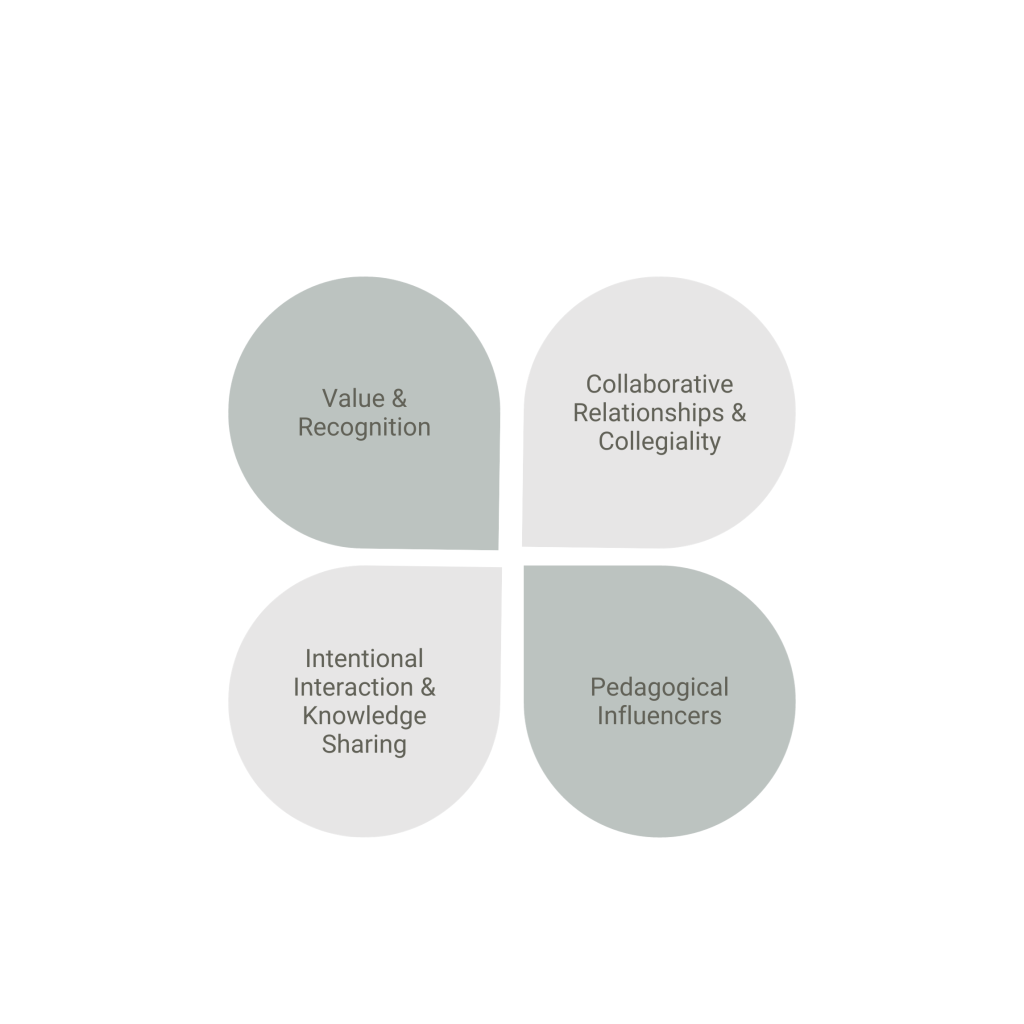I love a good read on how best to influence teaching and learning cultures in higher education. This recent article had me thinking critically about our work in higher education – Myllykoski-Laine et al. (2023).
It reminded me of four key elements critical to building a supportive teaching culture in higher education:
- Value and Recognition: teaching and the development of teaching expertise and communities needs to be valued, recognized, and appreciated across multiple organizational levels. Many formal and informal processes and structures provide value and recognition for teaching including spaces, environments, resources, workload assignments, awards, grants, resources, policy, vision, professional learning, and leadership.
- Collaborative Relationships & Collegiality: teaching and the development of teaching expertise should be recognized as a shared responsibility, across the academic community. A collegial “sharing culture” based on respect and trust are fundamental to creating communities of shared responsibility and understanding for teaching in higher education. Fostering this sharing culture extends beyond the responsibilities of teachers themselves.
- Intentional Interaction & Knowledge Sharing: opportunities for formal and informal interaction and knowledge sharing about teaching should be fostered, including opportunities for co-teaching, peer support and learning, dialogue, critical reflection, and the sharing of experiences, ideas and knowledge. The development of teaching and learning communities, networks and conversations must be fostered across all levels of the academic community.
- Pedagogical Influencers (aka Pedagogical Change Agents): Pedagogical influencers are individuals who actively support the development of teaching in community and positively influence change. Pedagogical influencers often hold informal roles and inspire concrete actions in their local teaching and learning communities. Pedagogical influencers require support, resources, recognition, and meaningful opportunities to impact change.
The authors acknowledge the inherent complexities and interrelationship of these different factors in influencing teaching values, attitudes, norms, principles, practices and structures across postsecondary institutions. They suggest, “…the development of a more supportive pedagogical culture requires intentional endeavors to influence abstract and possibly invisible cultural elements in the community” (p. 951).

I leave you with some further questions for reflection and dialogue.
- What are you already doing in each of these areas to intentionally build a supportive teaching and learning culture?
- What’s missing from this list? What would you add, change, refresh, revise?
- Where are your strengths and points of pride?
- What is one area where you would like to further learn, grow, and improve (as an individual, faculty/department, or institution)?
- What is one action (or forward movement) you would like to take to provide an even more supportive teaching and learning culture in your context?
Reference:
Myllykoski-Laine, S., Postareff, L., Murtonen, M., and Vilppu, H. (2023) Building a framework of a supportive pedagogical culture for teaching and pedagogical development in higher education. Higher Education, 85, 937–955. https://doi.org/10.1007/s10734-022-00873-1
